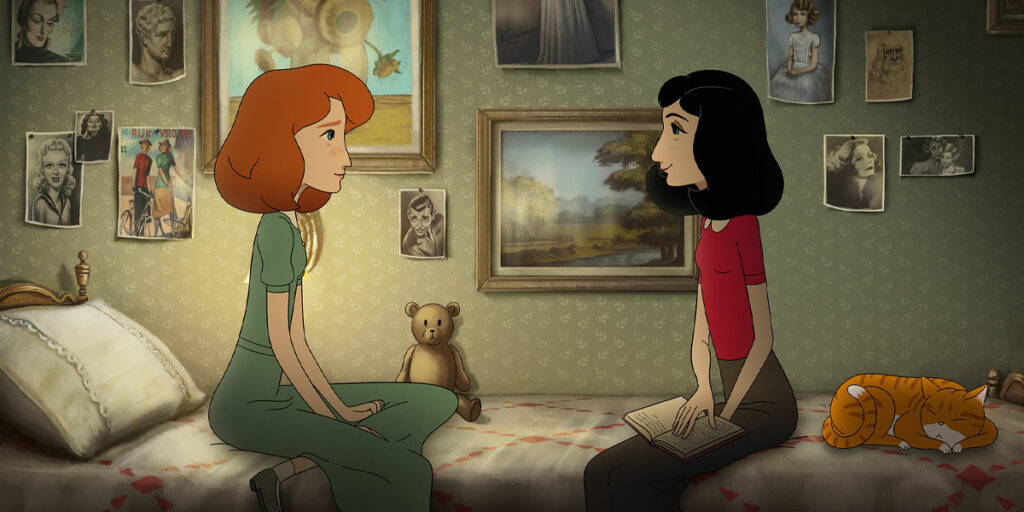Ari Folman’s well-meaning Where Is Anne Frank will work as an educational tool for children but struggles to feel complete or effective as a feature film.
People around the world will have heard of Anne Frank: a German-Dutch Jew growing up in Nazi-occupied Netherlands, her diary has become synonymous with the Second World War and one of the most well-known books ever written. Fewer people, however, will have heard of Kitty, Anne’s imaginary friend to whom the diary is addressed. In Where Is Anne Frank, Ari Folman (Waltz with Bashir) brings Kitty to life, with ink forming from the diary’s pages into a red-haired teenager dressed in 1940s clothing. Folman’s intentions are always born out of compassion and empathy, but he seems unable to effectively make a film that will appeal to both children and adults, as some of the best animated films do.
Where Is Anne Frank begins in Amsterdam in the present day. Kitty’s sudden appearance into a modern world – one without Anne and her family – forms the early narrative thrust, as she struggles to adapt to her new surroundings whilst also noticing similarities between the two time periods in their treatment of minorities and refugees. Invisible when inside the Anne Frank House but tangible when outside, Kitty meets Peter, a teenager generally ignored by society and reduced to petty theft.
Throughout these early stages of Kitty’s discovery, Where Is Anne Frank is peppered with emotive music and magical animation, with the two worlds morphing back and forth between one another in a gorgeous, flowing way. The character models can sometimes feel at odds with the beautiful, watercolour-style backdrops, but on the whole Where Is Anne Frank’s animation is a not just a joy to look at, but also a useful tool to symbolise and emote through vivid colours and memorable imagery.
This imagery is Where Is Anne Frank shines, for both children and adults; a prisoner train moving slowly into a dark red horizon signifies obvious feelings of danger and evil, but with a greater subtext hidden for adults who know this part of history better than a young child does. Nazi soldiers are drawn as pale-faced, identical figures, tall in structure and clad in all black. Like skeletal monsters, they are rightfully given no features and loom only as a presence of evil. As a whole, Folman captures the childlike wonder and fear that Anne Frank would have felt during this time, observing the world through her eyes and through Kitty’s. Eventually, Where Is Anne Frank begins to weight itself more towards the younger audience, losing sight of its adult viewers.
A stilted script which neither feels naturalistic nor magical dilutes the messages and themes of Where Is Anne Frank, whilst some stiff voicework reduces the film’s effect further. Most frustratingly, Folman’s attempts to draw parallels between today’s refugee experience and the 1940s’ Jewish experience are flimsy; aside from the clear and basic similarities, there is never anything more complex or thought-provoking here.
Kitty saving a group of refugees from deportation is touching and highlights what Anne Frank and her legacy stands for. It is magical, will work for a younger audience and highlights how easy it should be to treat refugees as equal parts of society, yet despite this, the idealistic conclusion feels like it reduces the immigration experience into something overly simplistic. Too often, Where Is Anne Frank feels like a muddled, too ambitious recounting of an incredibly important and devastating part of history, and a film with earnest messages but one that rarely feels like anything more than a useful educational tool for children.
Where Is Anne Frank will be released in cinemas in the UK and Ireland on August 12, 2022. In the US, the film will be available to watch on digital and on demand on September 9.

